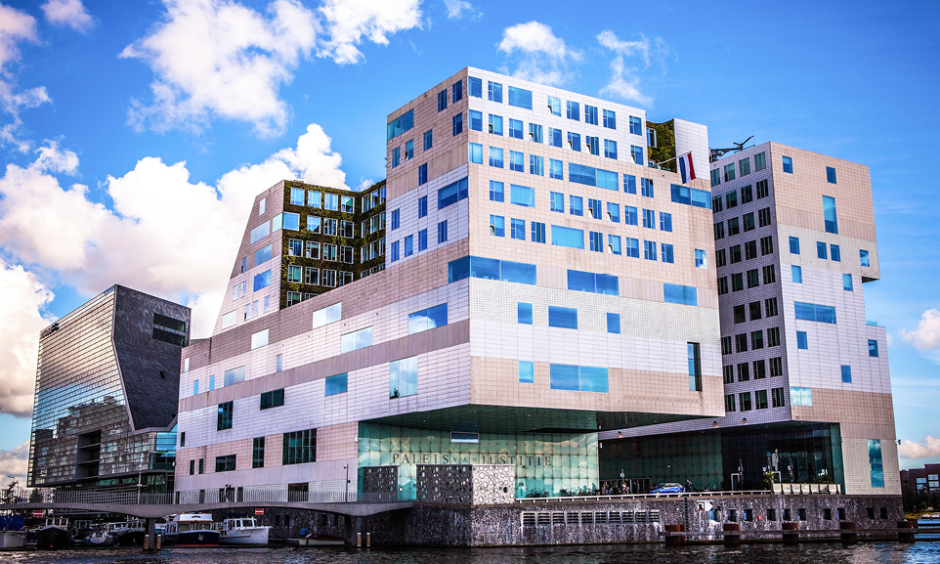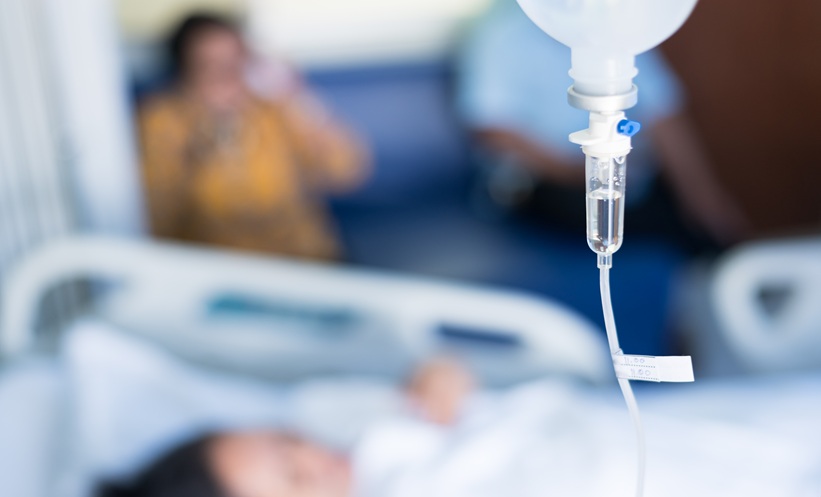Abstract
Migraine prophylaxis represents a better choice than symptomatic drugs, both for safety and for effectiveness. Today, drugs such as calcium channel blockers, beta-blockers, and topiramate are still used to treat migraine with and without aura, often with satisfactory results but in some cases with adverse effects, thus limiting their use. A new class of drugs in migraine prophylaxis are endocannabinoids, substances which modulate the mechanisms of neuroinflammation that cause migraine pain. Anandamide and palmitoylethanolamide have proven useful in migraine prophylaxis, suggesting their influence in neuroinflammatory processes and opening the way for new therapeutic perspectives.
Prophylaxis still remains the best treatment option for migraine. In the past, channel blockers, beta-blockers, and topiramate were used that were not always effective and were often accompanied by adverse effects. Despite this, they represented the best choice with respect to symptomatic therapy, which in most cases proved to be harmful. So, calcium channel blockers, beta-blockers, and topiramate have proved effective in the prophylaxis of migraine with and without aura. Recent research involves the use of substances belonging to the endocannabinoid system (ECS).1 These substances have proved able to adjust and modulate the mechanisms caused by neuroinflammation, which are held responsible for pain symptoms. The ECS is involved in a variety of nervous processes, such as behaviour, memory, cognitive functions, and pain.2,3 The use of cannabis to treat headaches dates back several centuries. The first unambiguous description is that of a Persian physician of the 9th century, and we know that, in the Middle Ages, Arabic medicine was the most advanced. In the mid-19th century, cannabis was introduced to Western medicine, and headache became one of the most frequent targets. Important therapeutic treatises from the period mention it for this purpose. For example, Edouard C. Séguin, President of the New York Neurological Society, stated that the prolonged use of cannabis improves migraines or headaches, alleviating or mitigating their severity.4
In 1915, Sir William Osler, one of the fathers of modern medicine, in his medical textbook ‘The Principles and Practice of Medicine’, recommended the use of cannabis for migraine, writing: “The Cannabis indica is probably the remedy that gives greater satisfaction.”4 Since then, research has come a long way. For obvious reasons, we do not have access to many clinical trials from those times, and recent data in the literature are scarce. In a case study by Prof Ethan Russo, a leading authority on the subject, 80% of migraineurs benefit from the ingestion of cannabis, often with complete resolution of symptoms.4
Returning to the subject in review, the authors argue that:
- Cannabis has a long history of safe and effective use in the treatment and prophylaxis of migraine
- Cannabis appears to modulate nociceptive processes in the brain and can function via serotonergic and other pathways involved in migraine
- Cannabis has also recognised anti-emetic properties, which are useful in treating migraine
- Cannabis, when inhaled, is rapidly activated, skipping intestinal absorption, which is markedly reduced in migraine. Thus, it can be dosed exactly to the patient’s request
Migraine has been shown to have a relationship with the ECS. The reason for this can be explained through effects on the trigeminal- vascular system, a regulating and modulating pain system, as supposed in migraine without aura or in the process of cortical spreading depression, as hypothesised in migraine with aura.5,6
Anandamide, also known as N-arachidonoylethanolamide (AEA), a fatty acid neurotransmitter, has an effect on both cannabinoid receptor Type 1 (CB1) and Type 2 (CB2) in the central and peripheral nervous system. AEA, from the Sanskrit ‘ananda’, which means ‘supreme joy’, is synthesised at need through a phospholipid precursor located in the cell membrane.4 AEA is associated with the perception of euphoria, happiness, and especially with the state of mind that combines a euphoric state of wellness with a soothing and relaxing sensation. Therefore, these endogenous cannabinoids neither stimulate the euphoria that accompanies moments of arousal, tackling stress, conflict, or a test; nor the euphoria of fighting. They stimulate the return to relaxed serenity after successfully addressing a commitment or difficulty. A mapping of AEA receptors, or receptors for endogenous cannabinoids on which cannabis carries out its action, has shown activity in certain areas of the reward system (the limbic lobe, the amygdala, the hippocampus, and the nucleus accumbens) and those areas of the brain responsible for the perception and communication of emotions, impulse control, aggression, the expression of the most delicate aspects of interpersonal relationships, and the motivational system.4
An action always documented with ‘brain imaging’ studies concerns the ability of cannabis to increase glucose metabolism in the orbitofrontal cortex, which, in connection with the reward mechanisms, works as the decision-making centre for an individual. This action has been exhibited only in people who abuse cannabis, suggesting that the brains of vulnerable individuals may present alterations that make them predisposed to development of dependence, even in the case of cannabis. Repeated reports suggest that the AEA system is involved in impulse control, self-identity, and ego perception.2,4 It has been hypothesised that the dysregulation of the AEA system could play a critical role in the onset of a type of schizophrenia. Psychotic disorders, in some cases present in cannabis users, would not be induced by cannabis directly, but provoked in susceptible individuals, because of the desensitisation of their AEA system. Individuals with mental disorders, which remain permanently at a sub-clinical stage, display severe symptoms, such as hallucinations, social withdrawal and paranoia. Thus, AEA has an important role in several brain functions surrounding behaviour, but also memory, appetite, and sleep.2 It has been proven to control pain, suggesting a blocking of peripheral pathways through cannabinoid receptors. There is evidence that AEA inhibits the release of neurotransmitters regulating nociceptive pathways, as shown by high levels of the cannabinoid found in regions involved in pain transmission, such as skin receptors or dorsal root ganglia.4 Regarding migraine, it was deemed able to potentiate the 5-HT1A receptors, proving effective in preventive migraine treatment, and its positive effects have already been demonstrated.
Palmitoylethanolamide (PEA), an endogenous fatty acid amide, is another substance that intervenes in the processes of neuroinflammation and is used in the management of neuropathic pain. Recently, it has been shown to be successful at treating rare and severe types of headache, such as the nummular headache.7,8 PEA is an ALIAmide, or ALIA-effect (Autacoid Local Inflammation Antagonism) amide. ALIAmides are a biological, local antagonistic response to tissue damage (injury), exerted by endogenous bioactive lipid products as needed (on demand). The discovery of PEA’s response was made by the Nobel Prize- winner Prof Rita Levi-Montalcini.
In particular, PEA plays an important role in neuroinflammation, modulating the action of glial and mast cells and maintaining cellular homeostasis. Stimulation of the trigeminal vascular system causes a neuroinflammatory process with the release of neuropeptides, such as Substance P, 5-HT, and calcitonin gene-related peptide (CGRP).4 In short, PEA as an anti-inflammatory agent for migraine is a resource not yet fully exploited. The pharmacological profile includes PEA, both in micronised form (particle size of 2–10 µm) and ultramicronised form (particle size of 0.8–6.0 µm). The formulation comprises tablets and microgranule sachets, the latter representing the ultramicronised form. Currently, the optimal daily dosage is ˜1,200 mg for painful conditions, such as headaches, cranial-facial pain, neuropathic, and radicular spine pain.
Adverse effects have not been reported in any diseases treated with PEA. This is due to the active principle of PEA, a drug considered a nutraceutical, or an integrator of drugs. PEA potentiates the activity of endogenous N-acylethanolamines with a mechanism, called entourage effect, that allows it to interact indirectly with the ECS.
In summary, as biodynamic properties, PEA is an endogenous N-acylethanolamine that plays an important role in the resolution of neuro-inflammatory and algic processes. PEA acts on several non-neuronal cellular targets involved in the peripheral and central neuro-inflammatory processes that occur in acute and chronic pain conditions, as demonstrated in numerous preclinical studies and endorsed by a growing number of clinical studies.
Furthermore, on mechanisms of action, the anti-inflammatory, and analgesic effects of PEA are attributable to multiple mechanisms of action of receptor pleiotropic nature. At the cellular level, PEA acts primarily on two non-neuronal cells: mast cells and microglia. The normalisation of excessive activation of these cells was involved in peripheral inflammation, spinal and central, characterised by chronic pain, and is the basis of the main effects of PEA.
CGRP and pituitary adenylate cyclase-activating peptide-38 (PACAP-38) are endogenous neuropeptides that can trigger migraine attacks and have, in recent years, gained considerable interest in the migraine field. However, the exact pathophysiological mechanisms underlying CGRP and PACAP-38-induced attacks have not been fully clarified. Recent data indicate that CGRP and PACAP-38 primarily have a peripheral site of action. It is hoped that the knowledge acquired from this theory on how CGRP and PACAP-38 might be involved in migraine pathophysiology will contribute to the development of novel and better migraine treatments in the future.9 PACAP plays several important roles in vasodilation, neurotransmission, neuromodulation, and neurotrophy, as well as activation of the trigeminal vascular system. Therefore, the aim is to explore the relationship between altered PACAP levels in peripheral blood and different types of headache.10
Further drugs are being investigated for the treatment of migraine, including lasmiditan (COL-144), a selective 5HT1F agonist, which has been identified in trigeminal systems showing effectiveness and safety in several studies using migraine animal models and reducing neuronal trigeminal vascular activation without any vasoconstrictive action.4 Recently, anti-CGRP monoclonal antibodies (ALD-403, LY-2.951.742, LBR-101) have also been developed to remove CGRP excess, released by trigeminal perivascular terminations.11 CGRP, a vasodilatator and pain signalling neuropeptide, seems to be a target for migraine. Anti-CGRP antibodies displayed high levels of effectiveness.12
These drugs are administered in addition to prophylaxis medications already taken, such as calcium channel blockers, antidepressants, anticonvulsants, beta-blockers, and others. The aim is to administer them alone in the future. Migraine is a chronic and often debilitating pathology, which needs prophylactic treatment, hence the need to find effective and safe substances. Thus, modulating the ECS, which is considered the origin of the neuroinflammation processes, could be a promising therapeutic option. Numerous studies are in progress, but the prospects are encouraging, since the data of the literature regarding the use of endocannabinoids in several diseases of the nervous system have demonstrated validity, effectiveness, and absence of adverse effects. Therefore, it is currently worth continuing this line of enquiry and future studies will be crucial to optimise the research and confirm its importance.








